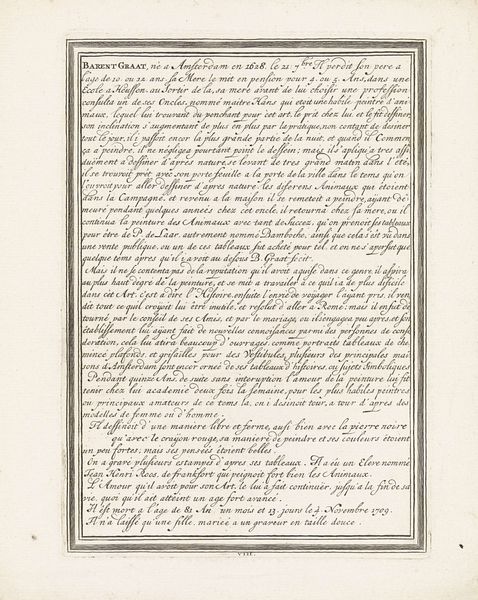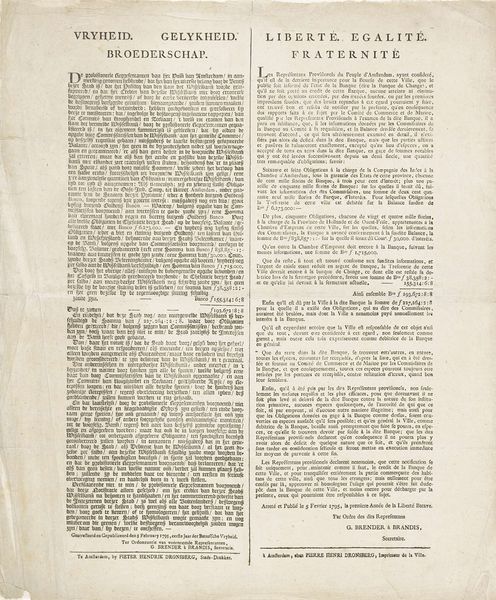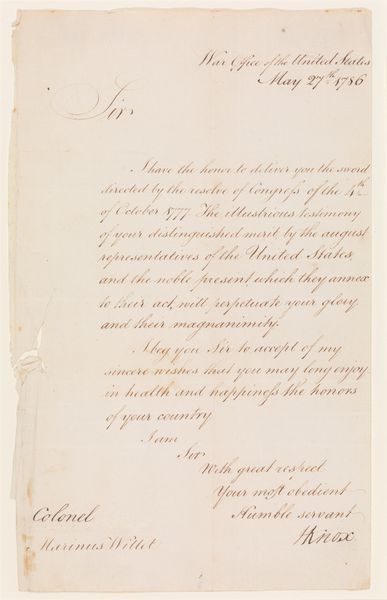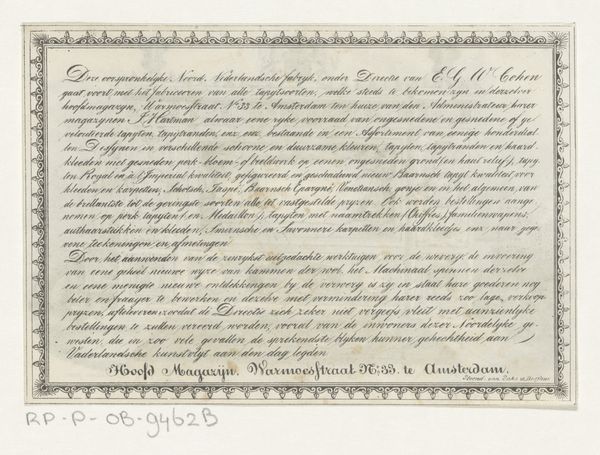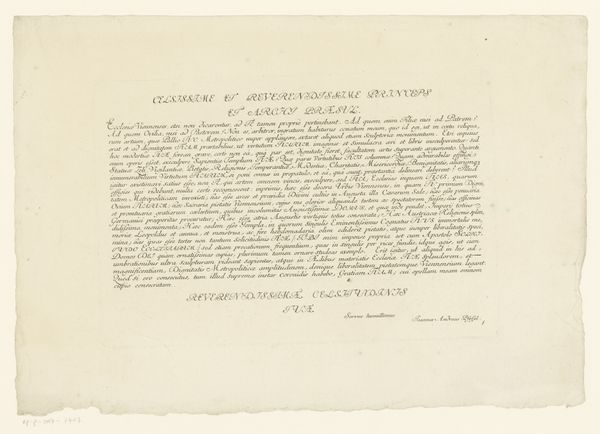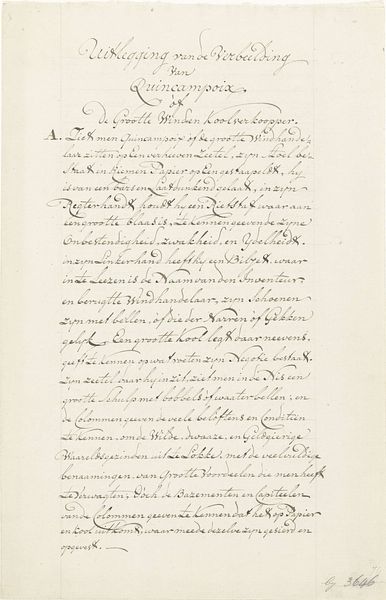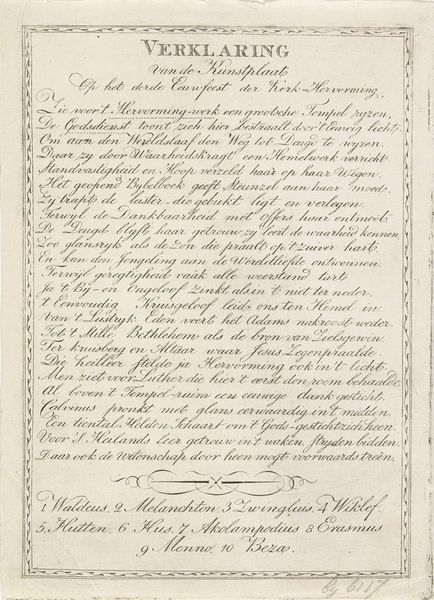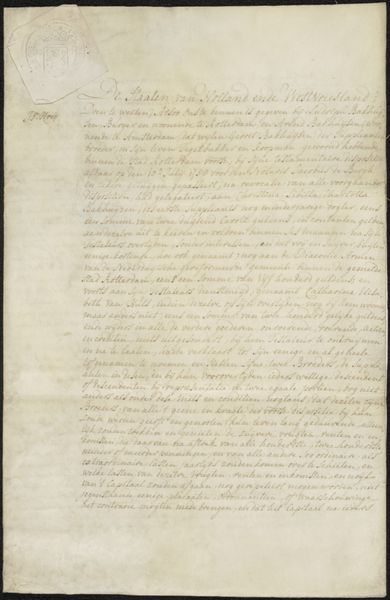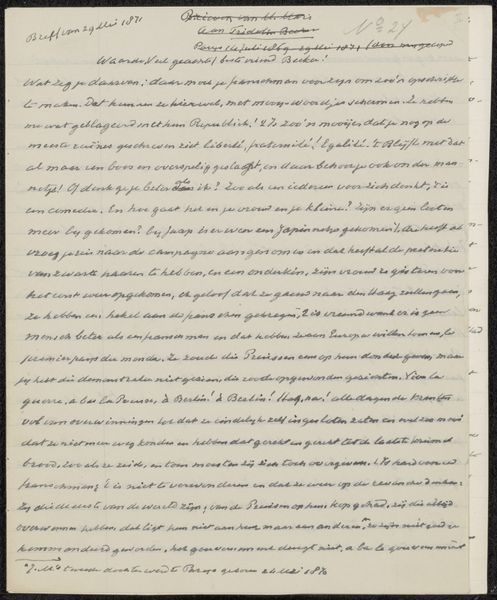
drawing, print, typography, engraving
#
drawing
#
script typography
#
hand-lettering
# print
#
lettering
#
hand drawn type
#
hand lettering
#
typography
#
hand-drawn typeface
#
fading type
#
thick font
#
handwritten font
#
engraving
#
small lettering
Dimensions: height 190 mm, width 295 mm
Copyright: Rijks Museum: Open Domain
Editor: So, this print, titled "Verklaring bij de prent Monument voor de Remonstranten" is estimated to have been made around 1800 by W. Roosing. It seems to be an explanation of a monument, rendered in incredibly detailed hand-lettering and engraving. It gives a sense of intense historical specificity, doesn't it? What jumps out at you? Curator: I'm immediately drawn to the labor invested in its creation. The meticulous engraving process, the deliberate choices in typography... It speaks to a community painstakingly crafting and controlling its own narrative and carefully assembling the materials that speak to its history. Consider the physical effort to produce such intricate detail consistently across multiple prints. This was a conscious material act of resistance. Where do you think these prints might have ended up? Editor: Perhaps distributed amongst the Remonstrant community, reinforcing their beliefs and history through this shared object. I am especially interested in learning more about materiality, especially the physical aspect of artistic labor and distribution within a religious movement during this time period, as they are defending themselves in their artwork.. I am still interested in learning more about how materiality can provide unique insights on production and distribution. Is that right? Curator: Precisely. And it challenges us to consider who had access to this form of information production and consumption. Who could afford to acquire and disseminate such materials? The physical object connects the producers, distributors, and consumers in a material web, strengthening their collective identity. How might this print's function differ from, say, a large-scale painting of the same subject? Editor: The intimacy and accessibility of a print like this seem very different. This medium allows for widespread access. Unlike a painting locked away in a wealthy home or church. The method of distributing this work helps further give voices to people outside the Church. Curator: Indeed. We've uncovered layers of meaning related to the production and circulation of knowledge, demonstrating that the value resides not just in its symbolic content, but in the labour and reach facilitated by its materiality. Editor: Right. Thanks; now, I’ll never look at a printed artwork the same way!
Comments
No comments
Be the first to comment and join the conversation on the ultimate creative platform.


